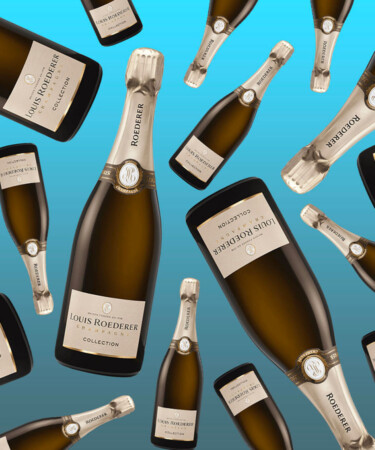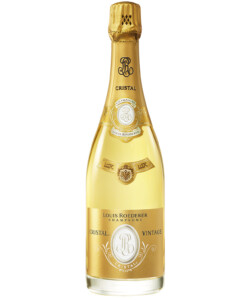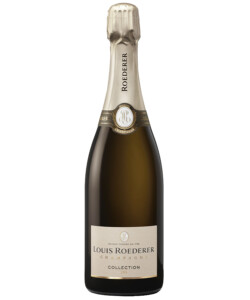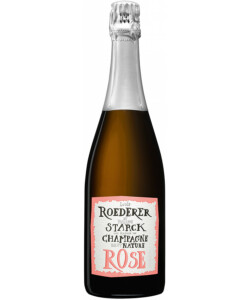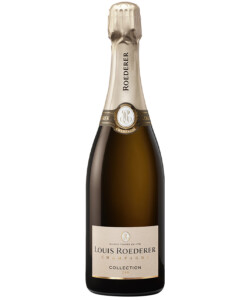Known for producing some of the world’s best Champagnes, Louis Roederer’s roots stretch all the way back to 1776. Originally founded as Dubois Père & Fils, the Champagne house was inherited in 1833 by Louis Roederer, who renamed the Maison in his own honor.
Almost immediately after Roederer took the helm, the quality of the vineyard’s soil became top-priority in order to produce the best wines. The house quickly acquired numerous vineyards, allowing it to have full control over quality and care while many other sparkling wine producers continued to source from growers. Today, Louis Roederer owns over 240 hectares (593 acres) of grand cru and premiere cru vineyards across three of Champagne’s classic districts: Côte des Blancs, Montagne de Reims, and Vallée de la Marne.
Now that you know the basics, here are 11 more things you should know about Louis Roederer.
-
Louis Roederer made a controversial decision when he first inherited the Champagne house.
When Louis too over ownership of the Champagne house, it was commonplace for producers to purchase the vast majority of their grape supply from growers, some of whom were not even located in the region. At the time, grapes had very little value, so it was considered to be a foolish investment for maisons to purchase vineyards of their own. That was of no bother to Roederer, though: In 1845, he made the risky decision to acquire 15 hectares (37 acres) of grand cru vineyards. By owning its own vineyards, Louis Roederer was able to establish which vines to plant in certain types of soil and when, as well as when to harvest and with what methods. Since the initial acquisition in the mid-19th century, Louis Roederer has come to own more vineyards than any other grand marques house, with 53 percent of its plots consisting of Pinot Noir, 41 percent Chardonnay, and 6 percent Pinot Meunier. Seventy percent of Louis Roederer’s total production originates from these vineyards, with each vintage and bottle of Cristal consisting of 100 percent Louis Roederer-grown grapes.
-
Louis Roederer was one of the first Champagne producers to adhere to the parcel method.
To further the control over grape-growing and farming, Louis Roederer implemented the parcel method to harvest fruit with as much precision as possible. Each parcel (individual sections of the vineyard) has its own unique soil and microclimate, which has the potential to result in myriad flavors when transformed into wine. During harvest, winemakers will often pluck their grapes from the vine before fermenting and blending the resulting wines with reserve wines to create consistency year-over-year. In a departure from this method, Louis Roederer harvests each parcel by hand, plot by plot, before pressing the grapes on site. To this day, each of Louis Roederer’s 410 parcels is harvested in this manner and left to rest in 450 stainless steel tanks for the first ferment. Throughout the fermentation process, each tank’s contents are tasted on a daily basis and sorted into categories based on aroma, flavor, and character. The Champagnes resulting from certain parcels are blended together for both non-vintage and vintage releases.
-
The Champagne house produces one of the world’s most coveted labels…
Of all Louis Roederer’s Champagnes, there’s none more famous than Cristal — renowned for both its pristine quality and distinctive crystal-clear bottle. It’s also got roots in royalty: When Louis passed away in the 1870s, his son Louis Roderer II took over operations and set his sights on expanding the house’s presence outside France. In 1876, the house was approached by Tsar Alexander II, who requested a luxurious and unique expression of bubbly to sip privately. The house harvested the grapes for the commission from its most high-quality plots, and produced the world’s first prestige cuvée. Originally a sweet Champagne, Cristal remained private until 1945 when it was reimagined as a dry sparkling wine and introduced to the public.
-
…and its famous bottle was created to help keep royalty alive.
At first sight, Cristal immediately stands out in the Champagne market’s sea of green-glass vessels. When the brand was producing the Champagne for Tsar Alexander II, Russia’s political climate was tumultuous, and the tsar was hyper-aware of the potential for assassination. As such, he requested that the Champagne being produced for him be stored in clear, crystal decanters to prevent potential assassins from sneaking a bomb into the bottle. This original container provided the luxury Champagne with its name. Beyond the transparent glass, Cristal also differentiates itself from its contemporaries through its lack of punt. Punts, which are relics of traditional glassblowing techniques, are believed to signify a Champagne’s prestige, with many high-quality bubblies bottled in thick glass bottles with deep curvature on the bottom. But given the leader’s fear of violence, Tsar Alexander II also requested that his bottles lie completely flat to further prevent anyone from concealing an explosive inside.
-
The brand’s bubbly ages for much longer than the Champagne region mandates.
Despite the Champagne region mandating that all non-vintage wines age for a minimum of 15 months and vintage wines for a minimum of three years, part of Louis Roederer’s signature style is a lengthy maturation period. In the brand’s flagship non-vintage Brut Premiere, the blend of approximately 40 percent Pinot Noir, 40 percent Chardonnay, and 20 percent Pinot Meunier ages for at least three years before it’s left to rest for a minimum of six months after disgorging. Also blowing past Champagne’s non-vintage aging requirements are the brand’s Collection Champagnes, which are multi-vintage blends from select vineyard plots. The most recent expression, Collection 244, aged for almost four years before it was released to the public. The brand’s vintage Champagne and rosés age anywhere from three years to five years and six months. Of all the Champagnes produced by Louis Roederer, Cristal undergoes the longest aging period, with the Brut maturing for six years on the lees and eight months after disgorgement while the Rosé is aged for an average of six years.
-
Many of Louis Roederer’s Champagnes are still riddled by hand.
Even though modern winemaking techniques allow for more efficient Champagne production, many of Louis Roederer’s bottles, like Cristal, are riddled by hand. During the process, created by Madame Clicquot, bottles are placed neck down on a riddling table and rotated in miniscule increments in order to bring the lees to the top of the bottle before disgorgement. In Louis Roederer cellars, riddlers rotate bottles of Champagne one-eighth of a turn, otherwise known as a pivot. According to Jean-Marc Lavabre, one of the house’s riddlers, accomplished riddlers can pivot 50,000 bottles of Champagne per day.
-
Louis Roederer is one of the few remaining family-owned Champagne houses.
While it has been 191 years since the original Louis Roederer established his eponymous Champagne house, the winery has remained controlled by the family and is currently in its seventh generation of ownership. Following the death of Louis Roederer II, his nephew Léon Olry-Roederer took the helm, and was later succeeded by his wife, Camille Olry-Roederer. Camille was responsible for heralding an even more luxe era at the house by purchasing more of grand and premiere cru vineyards throughout the 1960s and ‘70s and hosting lavish parties at the family’s home in Reims. In the ‘70s, Camille was succeeded by her grandson, Jean-Claude Rouzaud, who created the first vintage of Cristal Rosé. Rather than blending red wine into existing white Champagne, Rouzaud created the infusion technique, which ensures tannins are not extracted during the winemaking and is said to result in juicier, silkier wines. The winery is currently led by Frédéric Rouzaud, Jean-Claude’s son, who took over as CEO in 2006 and has overseen the conversion of Louis Roederer’s vineyards to entirely organic and biodynamic viticulture.
-
In 2002, Louis Roederer became one of the first in the region to adopt biodynamic farming practices.
In the late 1990s, Louis Roederer initiated a review indicating the direction of Champagne as a region and made the decision to invest significantly in the regeneration of soil and completely eliminate the use of chemical fertilizers. By the early 2000s, the house was among the first few in Champagne implementing organic and biodynamic practices. Fifty percent of all Louis Roederer vineyards are currently certified organic, and the remaining 50 percent are farmed biodynamically. The latter technique is showcased through the brand’s three vintages of Brut Nature Champagnes.
Louis Roederer has also made strides to protect its vineyards’ futures. In the early 2000s, the brand launched a program to increase the genetic diversity of its vineyards and protect its plant heritage. By utilizing massal selection, vines with the most diverse genetic potential are selected and a graft is taken from the existing shoot in order to produce an entirely new rootstock. These rootstocks are then planted in the brand’s vineyards where they will yield higher-quality grapes with each lifecycle. According to the brand, in 30 years, 100 percent of Louis Roederer vineyards will be planted with vines selected by the team and from their own nursery.
-
A fraction of the vineyards owned by Louis Roederer are plowed by horses.
In line with the brand’s hands-on and biodynamic farming techniques, one-eighth of the vineyards owned by the estate are farmed by a man-and-horse team. The practice is rooted in the belief that the plowing method significantly reduces the need for human and machine intervention and results in higher-quality precision. Additionally, the men leading the horses have a great deal of knowledge surrounding the local land, resulting in a more care-oriented approach when working in the vineyards.
-
The Champagne house has a collection of still wines.
In 2021, Louis Roederer released a collection of still wines in honor of Camille, the widow who led the house for 43 years. Hommage à Camille consists of a Pinot Noir and a Chardonnay, both single-vineyard wines produced in the Coteaux Champenois appellation. Since releasing the 2018 vintages in 2021, the brand has released its 2019 and 2020 vintage in 2022 and 2023, respectively.
-
The brand has a California outpost.
Established in 1982 by then-president Jean-Claude Rouzaud, Roederer Estate is located in California’s Anderson Valley and is known for its sparkling wine production. The winery’s vineyards, which took Rousaux years to select, originally consisted of just 340 acres but have since swelled to 620 acres of Pinot Noir and Chardonnay plots from across the AVA. Like its French ancestor, Roederer Estate’s vineyards are 100 percent organic with select vineyards farmed using biodynamic methods.
